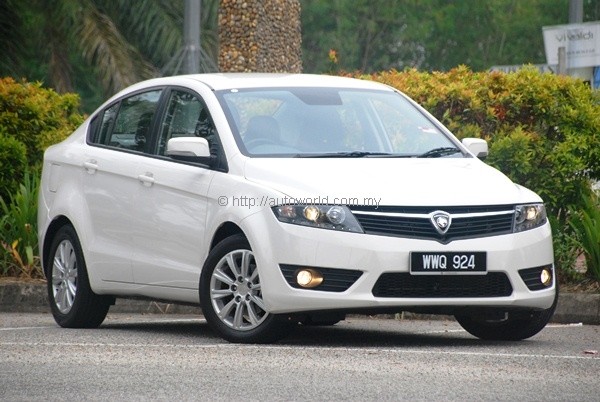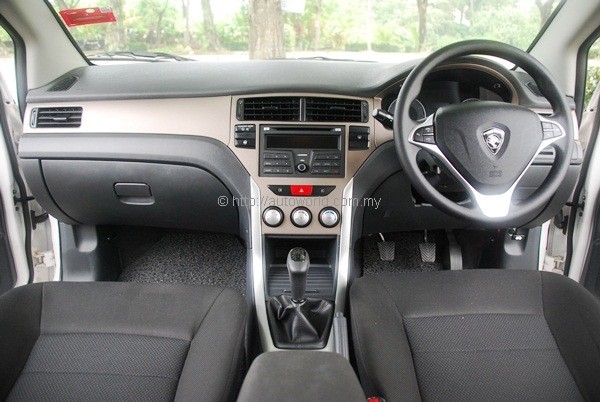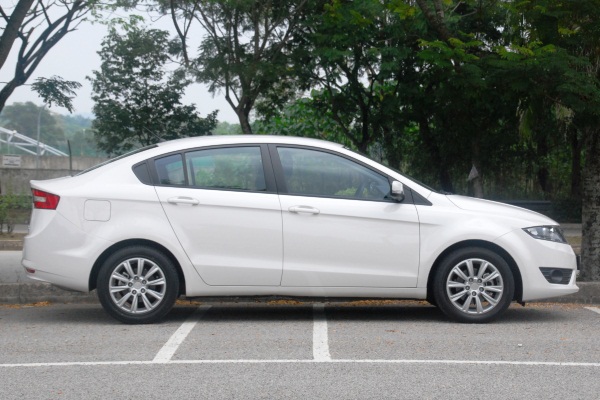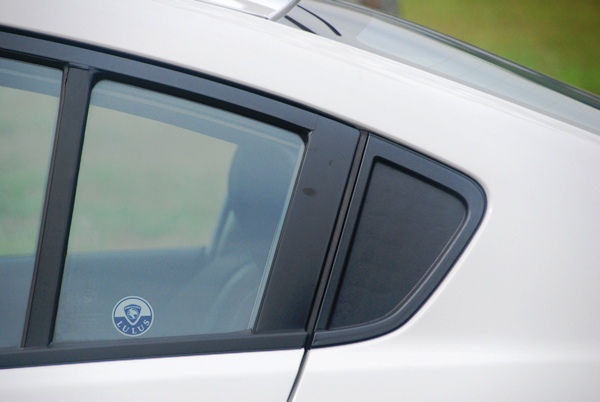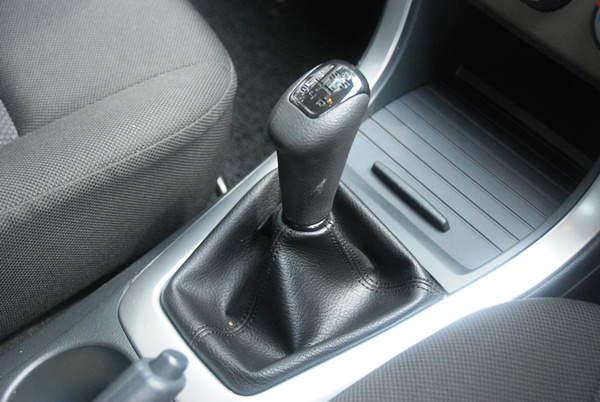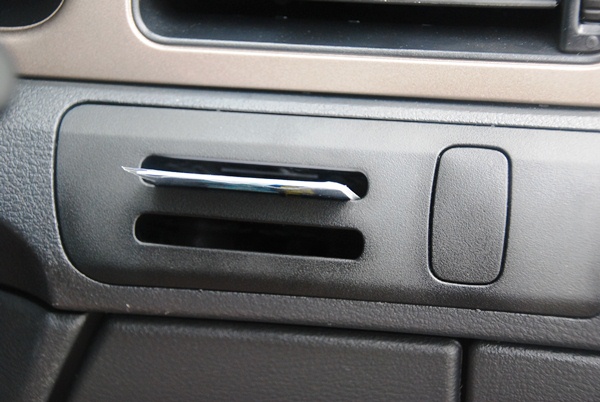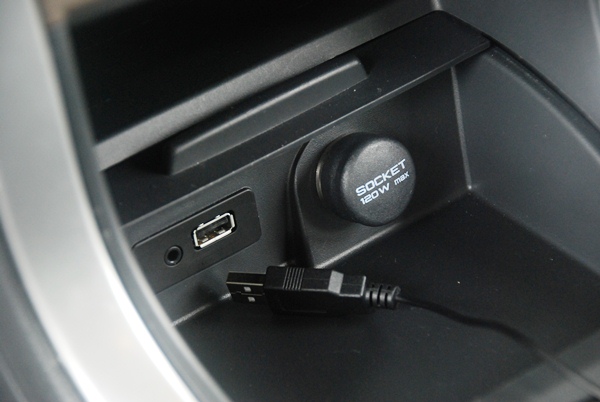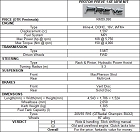Proton Prevé IAFM M/T Test Drive Review
Having reviewed the Proton Prevé in its top spec CFE guise a couple of weeks back, we now bring you Proton’s newest baby in a more modest format. The 1.6 Executive test car pictured here is powered by the familiar 1,597cc Campro IAFM+ engine that was introduced in the Persona, although its current 108hp state of tune debuted just last year in the Saga FLX SE.
For those deciding to forego the added power of the turbocharged CFE engine, Proton offers you a choice of two transmissions – manual or CVT. Our test car came with the former, and it is a 5-speed box supplied by Getrag, a well-known company in the transmission making business whose clientele include the likes of Ford, BMW, and many other manufacturers. This is the Prevé in its most basic state, and its price tag reads RM59,990 – certainly attractive for a full-sized C-segment sedan.
 |
| Exterior appearance has no difference with the CFE model. |
Ditching the clutch pedal for the IAFM CVT variant adds RM3,000 to the purchase price, although there are no differences in equipment to report. In Executive trim, items in the kit count include ABS, EBD, dual airbags, active front head rests, front and rear fog lamps, power windows all-round with auto up/down and anti-pinch for the driver, immobilizer, steering-mounted controls, remote boot release, follow me home lights, and in-car 4G wi-fi.
Save for the CFE badge’s omission, the lower-priced IAFM models are almost identical to the flagship variant in appearance. That immediately changes, however, when you step inside to be greeted by a very unflattering faux bronze trim lining the dashboard – I have one very respected colleague in the media who disagrees with this assessment, so that’s a matter of taste. Another immediately noticeable difference from the top-spec model’s interior is the 2-DIN audio unit which does away with the CFE’s built-in GPS, but retains Bluetooth and USB connectivity.
 |
| No start button, but card holders in its place prove much more useful. |
Also taken away from our IAFM test car is the engine start/stop button, which means you crank up the base Prevé the old-fashioned way. It is not a bad thing, as start/stop buttons are only useful if they come accompanied by keyless entry. When you still have to dig the key fob out of your pocket and insert it into a slot, pressing a button to start the engine becomes a gimmick and no longer a convenience. In the start/stop button’s place are two card holder slots that proved infinitely more useful. Genuinely regrettable omissions of equipment would be side airbags, ISOFIX, stability control, and traction control.
The most significant difference between the IAFM and CFE variants come of course in the engine room, where you will now have to make do with 30hp and 55Nm less to propel a frame that is no less heavy – our manual test car here tips the scales at 1,305kg, compared to 1,340kg of the CFE model. Furthermore, 108hp @ 5,750rpm and 150Nm @ 4,000rpm is no longer headline news for a naturally aspirated 1.6-litre petrol engine these days, even if we should remember that it does without any form of valve or cam timing trickery.
 |
| Rear fog lights are standard. Missing CFE badge is the only hint that this is a lower-powered model. |
The Campro engine’s lack of punch is especially prevalent in the lower reaches of its rev range, and any rate of progress is barely possible without at least 4,000 revs on the tacho. This brings us memories of criticisms leveled at the Campro engine in its early days, and it becomes quite an issue when you have a slope to negotiate. Those of you who do not enjoy working the engine and gears will be left frustrated by the engine’s shortage of low and mid-range torque.
At this point, many may ask, why did Proton not use the 125hp CPS engine to power the base Prevé instead? The simple answer to this is cost, and Proton was remarkably frank in admitting as much. We can’t say much about the IAFM CVT variant until a demo unit is provided, but in our manual test car, the lack of power is at least mitigated by a slick manual gear change with satisfyingly short throws. Keep the engine in higher revs, and brisk progress will be yours to enjoy.
 |
| 5-speed ‘box from Getrag feels slick and throws are satisfyingly short. |
The clutch could do with more bite though – as it was, my five-year old Waja with 107,000km on the clock has a harder-biting clutch than our test car’s. Stalling the engine was uncomfortably easy, and a bootful of revs were needed from a standing start each time. We can’t say for sure if this is inherent to all Prevés, or a result of abuse that media test cars invariably go through. Our test car had 6,000km on the clock. Consider a sports clutch as a possible aftermarket upgrade.
One anomaly on our test car that is definitely the legacy of abuse was its tyres, specifically the right rear tyre. All three variants of the Prevé use 205/55 R16 GTRadial rubber as standard, but our test car only had three of those – the remaining tyre at the right rear corner was a Neuton NT8000.
 |
| 16 in alloys with GTRadial rubber. |
Fortunately, there was nothing really amiss about our test car’s ride and handling save for the fact that there was a slight pull of the steering to the left. That aside, the same praise that we leveled at the CFE version for its dynamics are similarly applicable here. Surface harshness is superbly dealt with and there is a natural fluency to the chassis during directional changes. The hydraulic steering rack, a novelty these days, is well-weighted and superbly communicative in feedback. If I was car-shopping in the Prevé’s price bracket, its suspension setup alone would have swung my purchasing decision.
My personal view is that the base Prevé manual as tested here proved more satisfying to drive compared to the CFE model. The IAFM model’s equipment deficit against the CFE version does not have too many items that I would lose sleep over, and Proton’s handiwork in CVT technology can still be further refined. If driving satisfaction still means something to you, the cheapest Prevé becomes the more worthwhile pick of the range, though it could certainly do with more power.
 |
Further Details: Proton Prevé official prices and specifications.
See also:
– Proton P3-21A – Soft launch and sneak peek in Power of 1 event at Bukit Jalil
– Proton P3-21A – More Info to Digest
– Making of the Proton P3-21A: More pieces fall in place
– Making of the Proton P3-21A: Day Four’s progress
– Proton Prevé – First Driving Impressions
– Proton Prevé launched
– Proton Prevé Proves Itself



